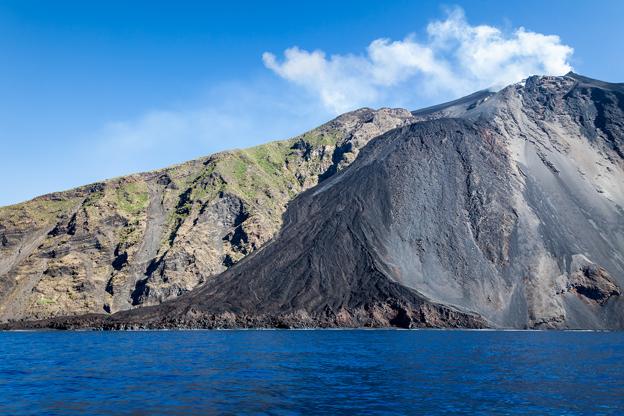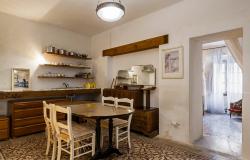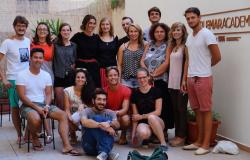Strung across the Mar Tirreno, off the north-east coast of Sicily, are the Isole Eolie, gems to die for!
With a history that spans millennia and a name bestowed from the Greek god Aeolus, the Aeolian Islands have a lot to live up to. I asked myself if anywhere could compete with the allure of the Greek islands. On leaving the mainland I got the feeling that the competition was about to hot up.
Vulcano
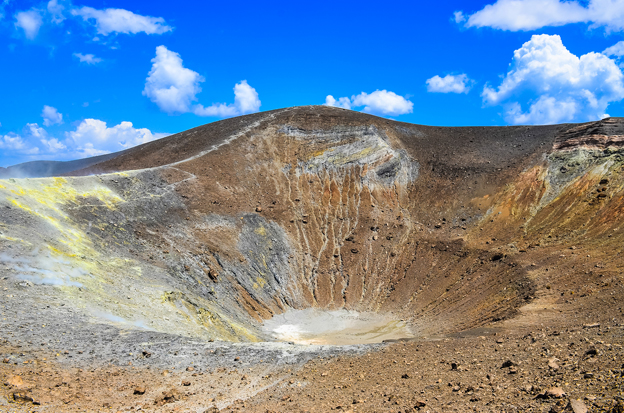
As the ferry cuts through the clear blue sea, the first island comes into view: Vulcano. The conical mountains that dominate the island and from where it gets its name, loom up ahead. (One of the finest views is from the south coast of neighbouring island, Lipari, where you can see an open crater scarred majestically by years of volcanic activity.)
The strenuous hike up to the Gran Cratere opens onto a geological garden of steaming fumaroles, sulphurous yellow rocks and hissing blow holes. This is a garden where there are no guards, no roped off areas – wander at will.
Views from the crater stretch as far as Filicudi to the west and Stromboli to the north, this panorama is worth the effort. Despite the smell, the steaming mud baths at Laghetto di Fanghi are a welcome sight.
Lipari
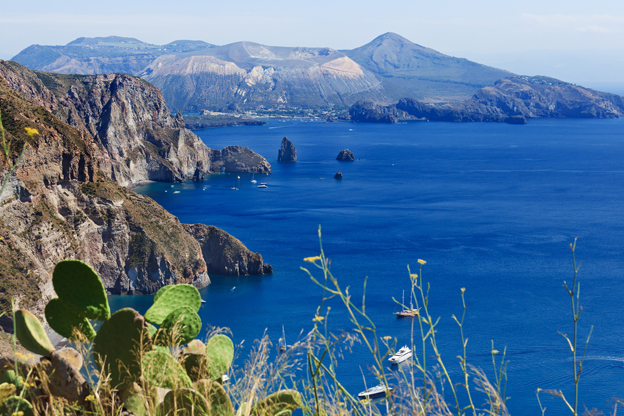
As the ferry swings into the bustling port of Lipari town, it’s hard to avoid the Spanish fortifications that split the town in two, creating Marina Lunga and Marina Corta.
Formerly a Greek acropolis, the remains of Lipari’s conquistadors are revealed in a wander around the Castello. Apart from the ruins of a Greek amphitheatre somewhat overshadowed by the enormous church of San Bartolo, evidence of the Greek presence is found in the renowned Archaeology Museum.
At the foot of the Castello is the main street, lined with the usual eclectic mix of fresh fruit, bakers, butchers and the ubiquitous three- wheeler fish stalls.
The small, cobbled streets around the marina brim with beautiful shops selling beautiful gifts for beautiful people - Malvasia wine, salted caperi and 2300 bikinis.
Leaving the bustle of Corso Vittorio Emmanuele are steep cobbled streets which link one marina with the other. Marina Corta, the smaller of the two, is framed with parasol-clad cafés perfect for the holiday voyeur witnessing the comings and goings of hydrofoil passengers and politics of the local dog population.
Nestled behind the waterfront are a maze of residential back streets and mini piazzas which are home to an open-air gallery of trompe l’oeil street painting, although there seems to be more action in the paintings than in this sleepy quarter.
The liveliness of Lipari town is a complete contrast to the beautiful pumice mounds in the north of the island. Under moonlight these mounds resemble an Alpine mountain range, a range where the sea breeze whips up snow-like dust and the sound of crashing waves tests the senses leaving a feeling of utter disorientation.
The road winds around the coast and opens out onto a panoramic view of the remaining five Aeolian islands.
Alicudi and Filicudi

In much the same way as Salina, tiny Alicudi and Filicudi, the most remote of the remaining islands in the archipelago, evoke rural romanticism. Acting once as a stop-over for travellers in the Mediterranean, the islands played host to most of the European conquerors.
With a combined population of less than 400 and no direct ferry links to the mainland, a visit to these islands is like stepping back in time – to a time when life was just less complicated, if hard. Electricity is a relatively modern phenomenon and the water supply is still erratic but the islands are not completely cut off – the internet is well established here.
A consequence of this tough life meant a nose dive in the population with mass migration in the 1920s to the U.S.A or Australia. Little concession to tourism makes Alicudi and Filicudi a naturalist’s heaven, with both islands offering a landscape studded with the spewed history of volcanic craters and the ghostly remnants of past agricultural lives.
The Aeolian Islands tour ends here.
If you lost the beginning of the tour, read part 1.
